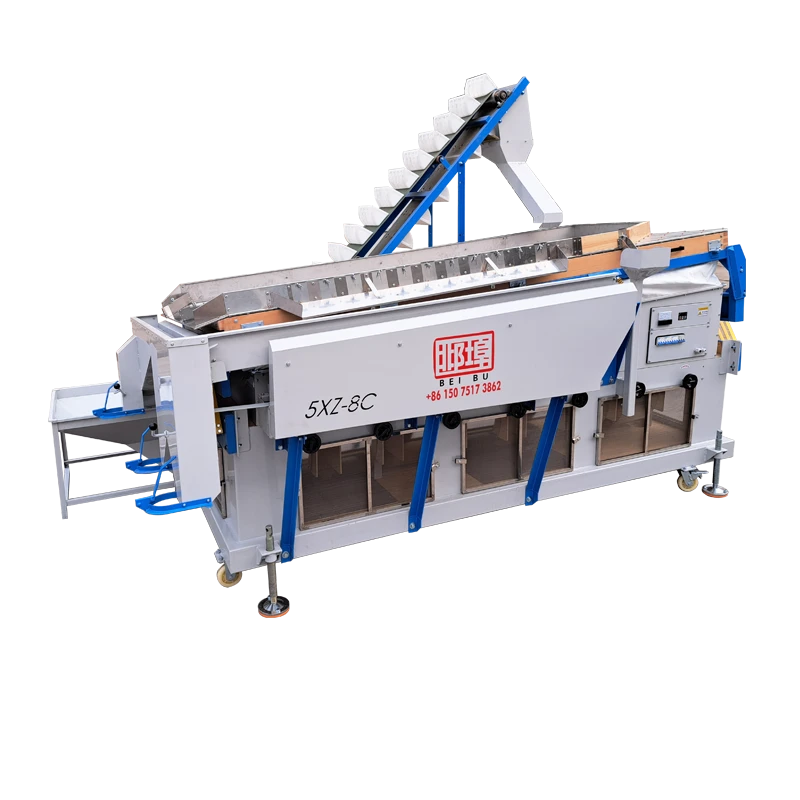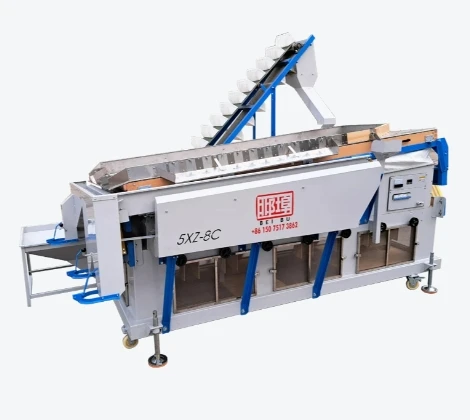Un separador gravitacional funciona separando partículas según sus diferencias de gravedad específica, densidad, tamaño y forma, utilizando la combinación de fuerzas de gravedad, vibración y flujo de fluido. El núcleo del equipo es una plataforma o mesa ligeramente inclinada, a menudo diseñada con una serie de ranuras o nervaduras para mejorar la eficiencia de la separación. El material de alimentación, generalmente una mezcla de partículas con diferentes densidades, se introduce en la plataforma, que vibra para generar movimiento. Simultáneamente, un flujo controlado de fluido, generalmente aire o agua, pasa a través de la plataforma para crear un lecho fluidizado. Esta fluidización provoca que las partículas más ligeras se eleven y se desplacen hacia el extremo de descarga, mientras que las más pesadas se hunden y se mueven en una dirección diferente. La inclinación y la vibración ayudan a estratificar las partículas, lo que permite que se separen según su gravedad específica. Al ajustar parámetros como la pendiente de la plataforma, la frecuencia de vibración y el caudal de fluido, los operadores pueden optimizar la separación para diferentes materiales y tamaños de partículas. El resultado es una separación limpia de las fracciones pesadas y ligeras, que posteriormente pueden recolectarse por separado. Los separadores gravitacionales se utilizan ampliamente en el procesamiento de minerales, el lavado de carbón y el reciclaje, ya que ofrecen un método sin químicos y energéticamente eficiente para mejorar la pureza y la recuperación del producto. Su diseño simple y sus configuraciones ajustables los hacen adaptables a diversas materias primas y requisitos operativos.
Maquinaria Beibu








